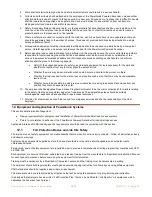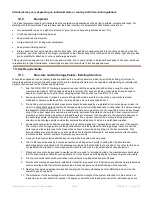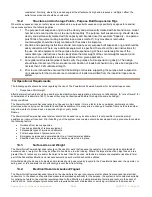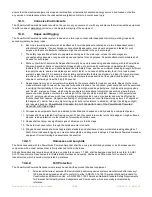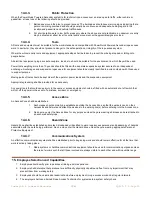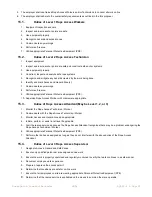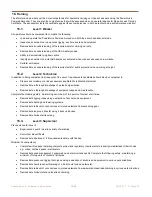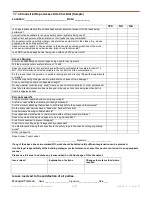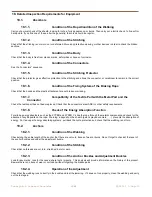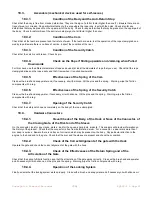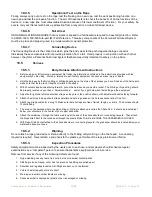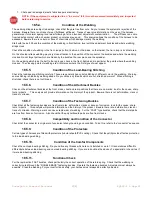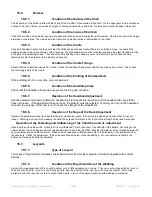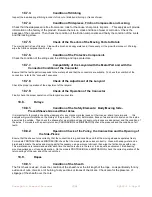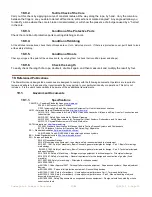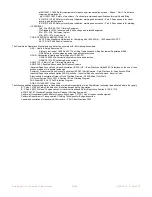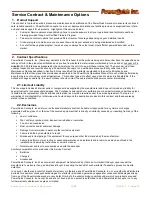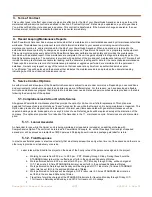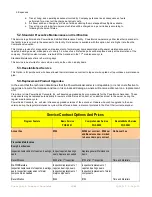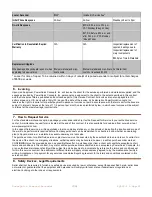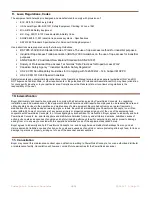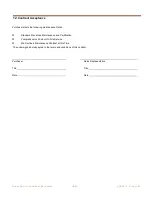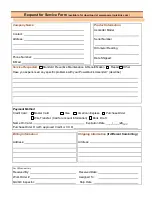
PowerQuick Powered Ascender
(34)
PQ500-1 1-Sep-15
18.9.2.
Tactile Check of the Core
Carry out this check by applying a curve of constant radius all the way along the rope, by hand. Vary the curvature
between the fingers: are you able to detect stiff sections, soft sections or marked angles? Any angle will allow you
to identify a zone where the core is broken or deteriorated, or will show the presence of a bulge caused by a “hernia”
in the core.
18.9.3.
Condition of the Protective Parts
Check the condition of protective parts covering stitching or knots.
18.9.4.
Condition of Stitching
At the stitched terminations, check that no threads are cut, torn, distorted or worn. If there is a protective cover, pull it back to look
at the safety stitching.
18.9.5.
Condition of Knots
Check your rope at the point of the various knots, by untying them to check their condition (wear and shape).
18.9.6.
Check the Length
To easily check the length of a rope, double it, double it again, and then measure it and multiply the result by four.
19.
Referenced Publications
The PowerQuick and designated accessories are designed to comply with the following documents. Operators are required to
review and adhere to these and other requirements that may pertain to your particular industry or operations. This list is not
inclusive. It is the user’s responsibility to be aware of these additional requirements.
19.1.
Government Documents
19.1.1.
Specifications
CAN/CSA
– Canadian Standards Agency
www.
csa
.ca/
Z259.2-3-99 Descent Control Devices
C22.2 Intrinsically Safe and Non-Incendive Equipment for Use in Hazardous Locations
ANSI
–American National Standards Institute
http://www.ansi.org/
ANSI A10.14, Requirements for Safety Belts, Harnesses, Lanyards, Lifelines, and Drop Lines for Construction and
Industrial Use
ANSI A39.1, Safety Requirements for Window Cleaning
ANSI Z359.1, Safety Requirements for Personal Fall Arrest Systems, Subsystems, and Components
ANSI S1.2, Physical Measurement of Sound, Method for
ASTM International
http://www.astm.org
F2266-03 Standard Specification for Masses Used in Testing Rescue Systems and Components
B117-03 Standard Practice for Operating Salt Spray (Fog) Apparatus
SAI
– Standards Australia
http://www.standards.com.au/
AS/NZS 4488.1 and AS/NZS 4488.2 Industrial rope access systems
BSI
– British Standards Institute
http://www.bsi-global.com/
EN
– European Standards
EN 341 Descender Devices
EN 567 Mountaineering Equipment, rope clamp, safety requirements and test equipment
EN 292-1: 1991, Safety of machinery, Basic Concepts, general principles for design - Part 1: Basic Terminology,
methodology
EN 292-2:1992, Safety of machinery, Basic Concepts, general principals for design - Part 2: Technical principals
and specifications
EN 418:1992, Safety of Machinery
– Emergency stop equipment, functional aspects – Principles for design
EN 953:1997, Safety of machinery
– General requirements for the design and construction of guards (fixed,
movable)
EN 1050:1996, Safety of machinery
– Principles for risk assessment
EN 50260-1:2002,
prEN 12841: Under Approval 2007, Personal fall protection equipment - Rope access systems - Rope adjustment
devices
prEN 1496:2005, Personal fall protection equipment - Rescue lifting devices
prEN1005-1: 1996, Safety of machinery
– Human physical performance Part 1: Terms and definitions
prEN1005-2: 1996, Safety of machinery
– Human physical performance – Part 2: Manual handling of objects
associated to machinery
prEN 1808:1998, Safety Requirements on suspended access equipment
– Design, calculations, stability criteria,
construction, tests
Summary of Contents for PQ 500-1
Page 46: ......
Page 48: ...NOTES...

